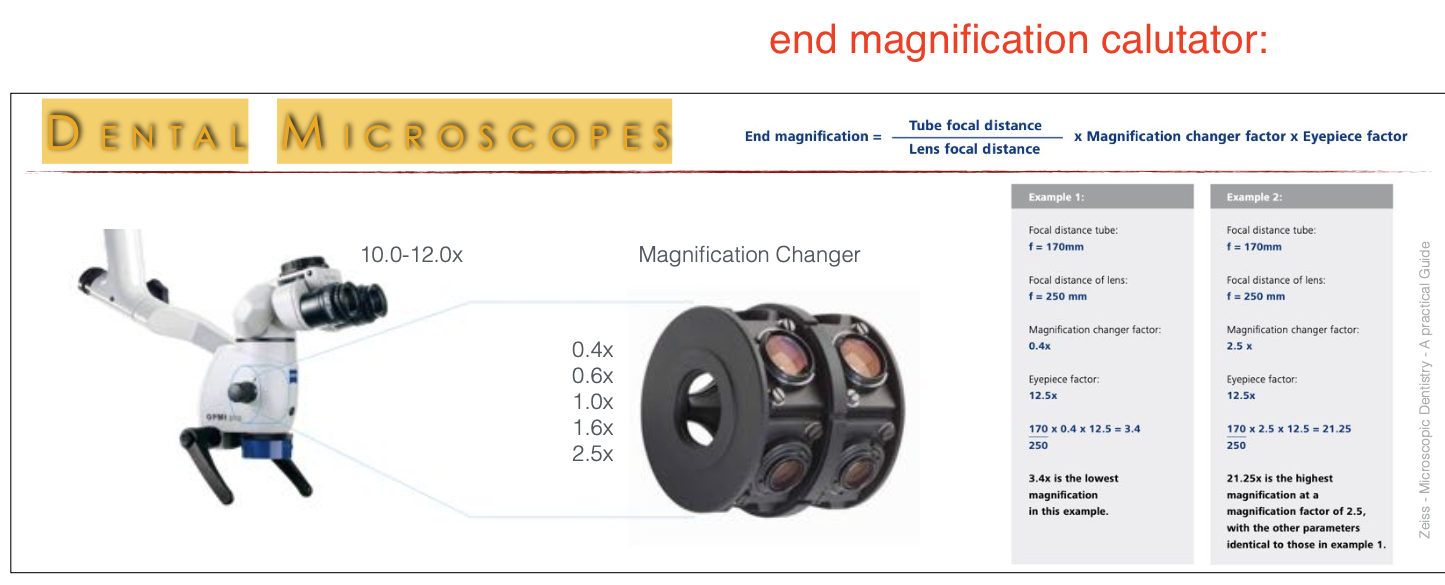lecture 8- magnification
1/14
There's no tags or description
Looks like no tags are added yet.
Name | Mastery | Learn | Test | Matching | Spaced |
|---|
No study sessions yet.
15 Terms
magnification
The apparent enlargement of an object by an optical instrument.
resolution
The smallest distance between two points that will allow them to be perceived separately

Declination angle:
angle that your eyes are inclined downward toward the work area is the declination angle

loupe lenses
simple
Compound (Galilean) - 2 lens one convex and one concave
Prismatic (Kepler) - multiple convex lenses
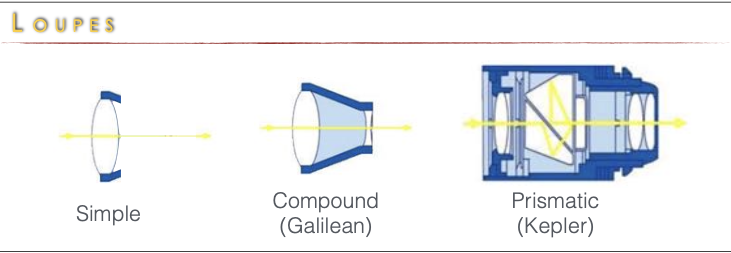
simple loupe
object is within focal length
examples": monoculars, binoculars

compound loupes
focal point is behind eye piece lens
the longer -> more magnification but less light

Prismatic (Kepler) loupes
much heavier
can go up to 10x magnification

2 types of loupe frames
TTL (Through-the-lens) and flip up
TTL frame
custom-made
closest to the eyes
prescription possible
mounted over eyes
made of titanium
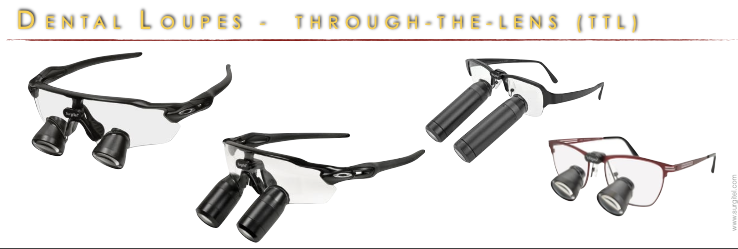
flip up frame
off-the-shelf
further away from eye
prescription possible
Adjustable
can be shared
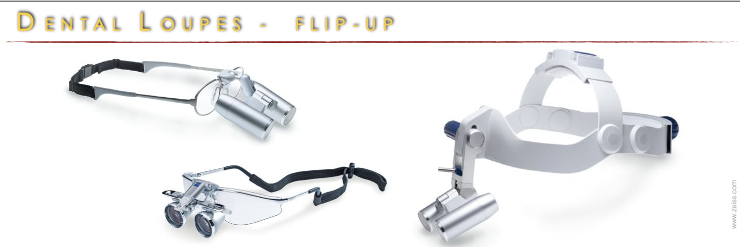
inter-pupillary distance
typically IPD= 60 mm
adjustable
working distance chart
more mag -> less working distance -> less diameter
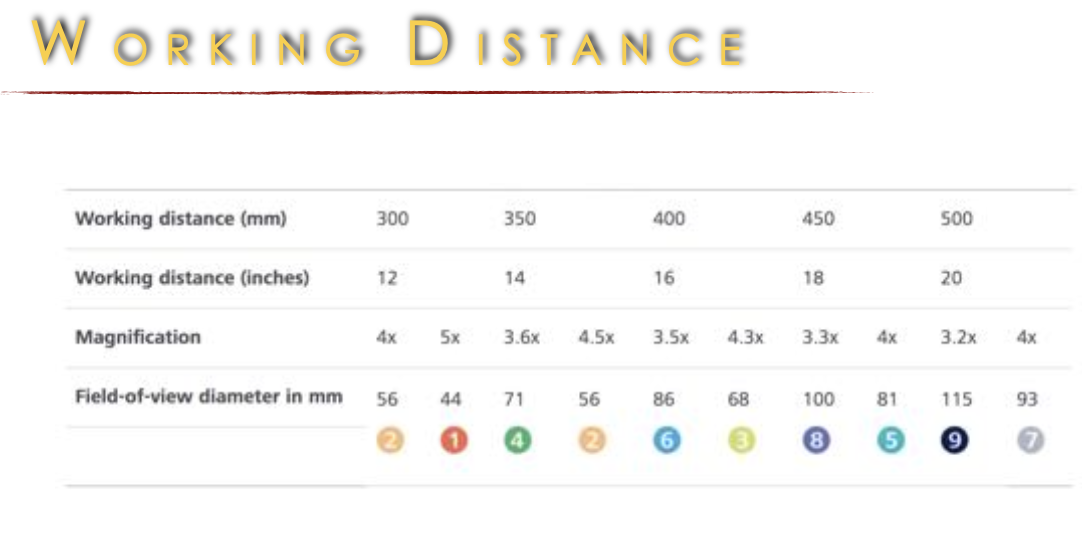
depth of field
refers to the spatial depth over which the object being visualized is in sharp focus.
higher mag -> more narrow/ shallow tip
highest magnification with optimal ergonomics is
microscrope
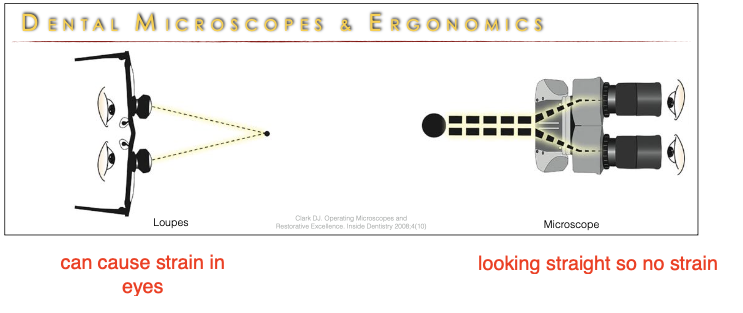
end magnification formula:
calculates the overall magnification of a system with multiple lenses
(tube focal distance/ lens focal distance) x mag changer factor x eyepiece factor
